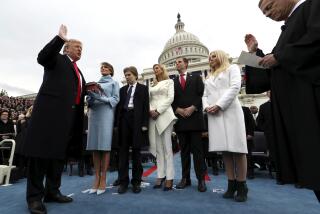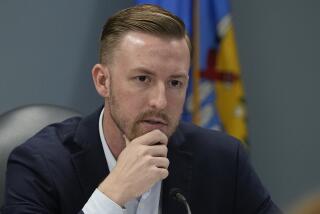Clinton Advises Schools to Seek Church Involvement
- Share via
WASHINGTON — Stressing the importance of faith to a well-rounded education, President Clinton on Saturday announced new guidelines to promote stronger partnerships between religious institutions and public schools.
Overall, the guidelines expand on a list of do’s and don’ts published in 1995, answering a broad range of questions, from how to teach about religion to what to do when students want to pray.
But in his weekly radio address, the president emphasized a new element: encouraging schools to actively invite churches and faith-based organizations to join them in a wide array of programs during and after school, involving school safety, student literacy and discipline.
While these partnerships exist around the country, schools often are skittish about welcoming church groups for fear of crossing a constitutional line, so the president’s rousing endorsement is likely to make them more popular.
“Finding the proper place for faith in our schools is a complex and emotional matter for many Americans,” he said. “But I have never believed the Constitution required our schools to be religion-free zones or that our children must check their faith at the schoolhouse door.”
Some civil libertarians thought the president’s remarks ignored a delicate constitutional balance by defending religious freedom but failing to mention the restraints.
In his short address, Clinton mentioned, for example, that students have the right to pray privately, the right to say grace, the right to read the Bible, without saying what they don’t have the right to do.
“It certainly was a one-note address,” said Barry Lynn of Americans United for Separation of Church and State. “I kept saying, ‘Gee, where are the limits? Where is a specific and clear statement that these partnering programs cannot be used to evangelize and recruit students for specific religions?’ ”
In contrast, Secretary of Education Richard W. Riley’s letter to principals and the pamphlet of guidelines meant for school officials and volunteers more explicitly lay out the limits of what religious volunteers are permitted to do in public schools.
More to Read
Sign up for Essential California
The most important California stories and recommendations in your inbox every morning.
You may occasionally receive promotional content from the Los Angeles Times.













